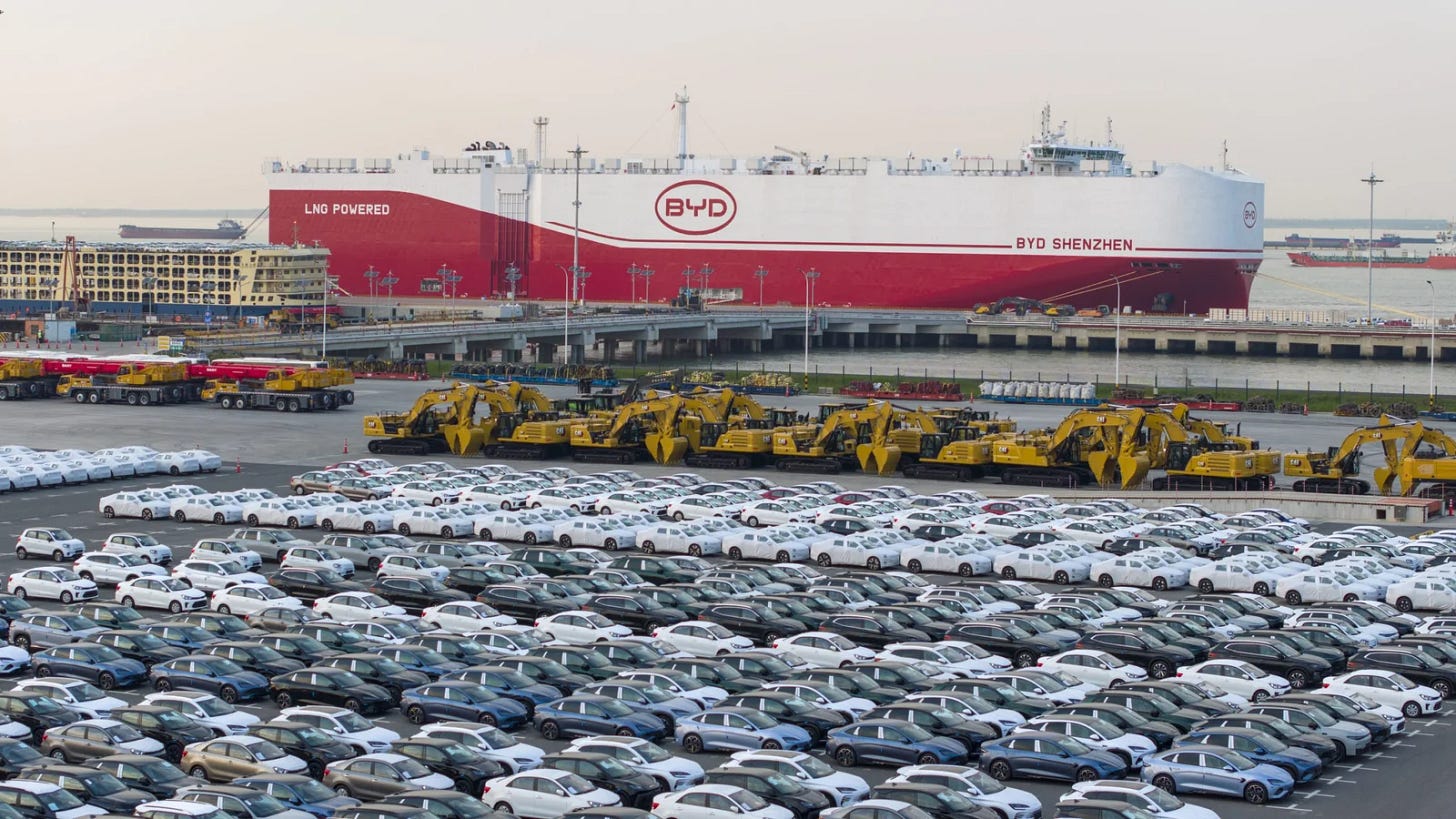The Hemisphere In-Flux 🌎 Latin America Tests Climate Finance Breakthrough
An IADB-led model to recycle green bonds, Latin migrants' Spanish bet, California's Amazonian oil reckoning and more.
The Hemisphere In-Flux features selected stories and news from journalists and media organizations covering Latin America and the Western Hemisphere's most pressing challenges – and opportunities: security, migration, the environment and technology and innovation. The Hemisphere In-Flux is published weekly. By Roberto Patiño and Tony Frangie.
🔥 The Hot Topic
⚡ Power Lines
Business and energy in the region
LatAm-Backed Green Loans Could Unlock Trillions in Climate Finance
The Big Picture: The Inter-American Development Bank (IADB) is developing a groundbreaking plan to repurchase performing renewable energy loans in Latin America, using public funds to repackage them for institutional investors. This strategy, pioneered by climate adviser Avinash Persaud, could become a cornerstone of the $1.3 trillion in annual climate finance promised to the Global South by 2035. By leveraging development bank guarantees and securitizing loans, the initiative would unlock billions in new private capital to fuel the green transition across developing economies.
What’s at Stake: The IADB’s proposal arrives amid slow progress toward climate commitments and warnings that major economies like the U.S. and Australia are still planning large-scale oil and gas expansion. Developing countries—often rich in renewable energy potential but starved for capital—need alternative financing structures to meet both mitigation and adaptation goals. By buying up existing, low-risk loans and mandating reinvestment into new green projects, this mechanism creates a replicable “virtuous cycle” of capital recycling that could scale fast, even amid tight global credit conditions.
Why It Matters: This innovation is one of the most pragmatic responses yet to the climate finance gap, sidestepping rich countries’ broken pledges and focusing instead on unlocking private sector dollars through structural reform. It directly addresses the needs of Latin American and other developing economies by empowering local banks, supporting climate resilience, and offering a scalable model ahead of COP30 in Brazil. If successful, it could help shift climate financing from fragmented grants to a self-sustaining investment ecosystem.
🧭 Americas on the Move
Migration and policy responses across the region
As Trump Cracks Down, Spain Becomes the New Latin Migrant Dream
The Big Picture: Spain is emerging as a magnet for Latin American migrants disillusioned by the Trump administration’s raids and restrictive asylum policies in the U.S. Prime Minister Pedro Sánchez’s government has streamlined immigration rules, legalized over 700,000 irregular migrants since 2021, and is negotiating a new bill that could regularize up to 1 million more—many of them Spanish-speaking and Catholic. With high acceptance rates, no visa requirements, and cultural proximity, Spain is fast becoming the preferred route for Latin Americans seeking safety and opportunity.
What’s at Stake: This shift has economic and geopolitical weight. Spain’s aging population and labor shortages—especially in construction, agriculture, hospitality, and tech—have turned migrants into key drivers of growth. Between 2022 and 2024, the country posted the strongest per capita GDP growth among Europe’s four largest economies, with up to 25% of that linked to migrants. In contrast, the U.S. risks weakening its labor market and social fabric by pushing away the same demographic. Critics of Spain’s model cite high unemployment, but business leaders and economists stress that foreign workers are filling roles locals won’t take and helping sustain public finances.
Why It Matters: As the U.S. intensifies its crackdown, Spain offers a counter-model: pragmatic, inclusive, and economically effective. The stark contrast could reshape Latin American migration routes and perceptions of Western leadership. While Trump’s America sows fear and underground economies, Spain is turning migration into a tool for demographic renewal and growth. For many would-be migrants, the “American Dream” is now becoming Castilian.
🦅🐉 The Eagle and the Dragon
Great power competition in the Americas
BYD Floods Brazil With EVs, Sparking Alarm—and Opportunity
The Big Picture: Brazil has become a key front in the U.S.–China economic rivalry, as Chinese automaker BYD dramatically increases shipments of electric vehicles to Latin America’s largest market. In just five months, BYD has landed around 22,000 vehicles in Brazil, where it now commands over 80% of EV sales. But labor groups and domestic manufacturers are pushing back, warning that Chinese firms are exploiting Brazil’s low tariff window without meaningful local investment, delaying promised factories and bypassing local suppliers.
What’s at Stake: The influx of Chinese EVs has triggered political pressure to accelerate Brazil’s plan to restore a 35% tariff on imports, originally designed to gradually phase in through 2026. At the same time, the Lula administration is trying to balance industrial recovery and green goals ahead of COP30. While the government welcomed BYD’s purchase of a former Ford plant in Bahia, delays linked to labor investigations and weak local sourcing have cast doubt on its impact. If Chinese EVs continue flooding the market without corresponding industrial commitments, Brazil risks job losses and growing dependence on imported tech.
Why It Matters: For the U.S., this creates a window to counter China’s expanding industrial reach in Latin America—not with tariffs, but with partnership. U.S. automakers and battery firms could invest in local EV production, support lithium supply chains, and work with Brazilian stakeholders to develop a greener, more autonomous industrial base. Strategic investments would not only protect U.S. interests in a critical market but also offer a democratic model of clean tech development, rooted in transparency, jobs, and shared innovation.
🛡 Shields Up
Evolving threats and security strategies in the Americas
Organized Crime’s Global Surge Is Costing the World –Including Latin America– Trillions
The Big Picture: Organized crime is now a global economic force. From cyber syndicates in Southeast Asia to cartels in Mexico and mafia networks in Italy, illicit economies are thriving, fueled by war, inequality, and weak state institutions. According to the Global Initiative Against Transnational Organized Crime, 83% of the world’s population lives in countries with high levels of violence. The financial toll is staggering: the Institute for Economics and Peace estimates that violence cost the global economy $19.1 trillion in 2023, or 13.5% of global GDP. In Latin America alone, organized crime drains 3.4% of GDP—more than what many governments spend on education or social programs.
What’s at Stake: Latin America, the world’s most violent region by homicide rates, is suffering severe economic damage from entrenched criminal networks. In Mexico, extortion—known as "pagar piso"—distorts local economies and inflates prices of basic goods. In Colombia and Brazil, narco-networks infiltrate trade and finance. The Inter-American Development Bank estimates the cost of crime equals nearly 80% of education spending and 12 times the R&D budget. These criminal structures deter foreign investment, deepen labor informality, and push communities into cycles of poverty and displacement. Without robust institutional reform and regional cooperation, organized crime threatens to permanently erode the region’s development gains.
Why It Matters: This is not just a security crisis—it’s an economic emergency. Illicit economies suppress productivity, erode the rule of law, and stifle long-term development. Multilateral institutions and governments face an urgent challenge: to design coordinated responses that go beyond enforcement—boosting prevention, improving transparency, and reinforcing governance. Without systemic interventions, the global shadow economy will continue to siphon trillions from the formal economy, undermining stability in both the Global South and North.
⚙ The Cutting Edge
Innovation and digitalization in the hemisphere
Latam-GPT Set to Democratize AI in Latin America
The Big Picture: A dozen Latin American countries, led by Chile, will launch Latam-GPT in September—the first large language model specifically trained to reflect the region’s linguistic and cultural diversity. Spearheaded by Chile’s National Center for Artificial Intelligence (CENIA) and backed by over 30 regional institutions, the open-source initiative aims to accelerate AI adoption in education, healthcare, and government services. Built on Meta’s Llama 3 architecture and powered by a decentralized network of regional computing resources, Latam-GPT is also designed to help preserve Indigenous languages, starting with Rapa Nui.
What’s at Stake: By relying almost exclusively on English-dominant AI models, Latin America risks reinforcing digital dependencies and cultural misalignments in its technological infrastructure. Latam-GPT promises a homegrown alternative that aligns with regional needs, language, and identity—opening the door for tailored applications such as AI-powered teachers, health assistants, and public service bots. The project could also serve as a blueprint for other regions seeking tech sovereignty and more equitable access to frontier technologies.
Why It Matters: This initiative positions Latin America at the forefront of the Global South’s bid to shape AI on its own terms. In a world where algorithmic bias and Western-centric data dominate, Latam-GPT offers a counterweight—amplifying regional voices and preserving linguistic heritage. It also reflects a growing trend of public-private-academic coalitions in Latin America pursuing digital transformation with autonomy, equity, and cultural relevance in mind. If successful, Latam-GPT could redefine how the region builds inclusive tech ecosystems—and inspire others to follow suit.
🦜 Spaceship Earth
Climate risks and environmental challenges in the Western Hemisphere
California Moves to Review Amazon Crude Imports Amid Pressure from Indigenous Delegation
The Big Picture: California lawmakers have introduced a resolution to assess the state's crude oil imports from the Amazon, spurred by a visit from Indigenous leaders from Ecuador who are calling for international solidarity against further oil expansion in their rainforest territories. The resolution follows the Ecuadorian government’s plan to auction off 14 new oil blocks—spanning more than 2 million hectares of largely Indigenous land—in 2026. During their visit, the Indigenous delegation joined local activists in Richmond, paddling near a Chevron refinery while sharing accounts of environmental damage and threats to their ancestral lands.
What’s at Stake: If passed, the California resolution could mark a pivotal moment in the growing global movement to halt the financing and consumption of Amazon crude, which is often extracted in violation of Indigenous rights and environmental protections. California is the world’s top consumer of Amazon oil, and any shift in its procurement policies would send strong market signals to producers and investors. This comes at a time when Ecuador’s government, under economic pressure, is doubling down on extractivism despite local and international resistance.
Why It Matters: Efforts like this show how coordinated protest and policy advocacy in consuming countries can amplify environmental and Indigenous rights struggles in producing ones. By linking consumer accountability to frontline resistance, cross-border collaboration becomes a critical tool to confront extractive pressures and shift global energy systems. California’s move suggests that solidarity-driven climate action can echo across continents.






